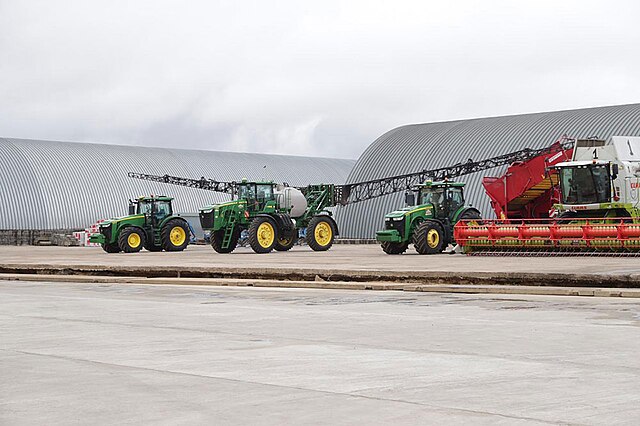If reelected, former U.S. President Donald Trump intends to impose 10% worldwide import tariffs in a hard-hitting “Trump 2.0.”-styled term.
But first he promises to continue where he stopped in 2020 by slamming 60% or more tariffs on imports from China.
These levies will land on the usual suspects like soybeans, pork, vegetable oils, among other agricultural imports.
Below is a look at how various agriculture-related sectors will fare if he wins another term in November 2024.
Trump 2.0 vs World Agriculture
A Trump 2.0 term could hurt global trade in a similar manner as during the recession of the 1930s.
In 1930, the U.S. slapped a median 47% tax on mainly agricultural imports, which made Britain retaliate in 1931 with 50% tariffs.
This is a far cry from today’s average of 3% in tariffs that the U.S. imposes on foreign goods.
Home Agriculture
The above 3% duty could hike upon Trump’s reelection to 10% and it could ironically benefit local farmers through subsidies. For instance, when China refused to buy American soybeans due to high tariffs in 2019, farmers got direct compensation. This way they benefited even without selling their oilseeds.
Between 2019 and 2020, the Trump administration paid farmers an unprecedented $28 billion kitty to compensate them for low prices.
Some farmers pocketed some $100,000 in direct payments apiece, according to a December 31, 2019 NPR report.
In Stocks
Like agriculture, local stock trade also did surprisingly well during Trump’s term due to an American-first taxation method.
S&P 500 for example rose by 68% during the Trump administration due to tax cuts at home.
Standard and Poor’s 500 (S&P 500) is a stock market indexer that tracks some 500 large companies in the United States.
In Energy
A Trump 2.0 era could also eradicate fears in the energy sector for the former president champions fossil fuel production.
This only months after COP28 in Dubai with the support of the United Nations vowed gradual fossil fuel phase-out.
On top of this, Trump promises a smooth approach to climate regulations, which could favor companies afraid of tough energy rules.
So, home agriculture, energy and the stock markets could find favor in a Trump comeback but global trade would keel over. With this in mind, the statistics below shed further light on agricultural trade tariffs in the United States.
U.S. Agricultural Tariffs Statistics
Between 1990 and 2015, the U.S. had 20 Free Trade Area (FTA) countries commanding between 30 and 70% of American agricultural exports, due to the 0% tariff advantage. During this period, non-FTA nations paid an average 5% in agricultural tariffs, which had reduced to 3% by 2024.
What was the effect of the 2018-2019 retaliatory tariff war with China?
In 2018, the Trump administration began levying agricultural imports from China and China reiterated with tariffs between 2.5 and 25%. Because China was the biggest market for American agricultural goods, it left a home surplus which sold at low prices. By 2019, $30 billion of U.S.’ agricultural products had tariffs on them, representing 22% of all goods under the tariff war. Besides, U.S.’ agricultural exports fell by $27 billion between June 2018 and December 2019, with soybeans exports declining the most by 71%.
